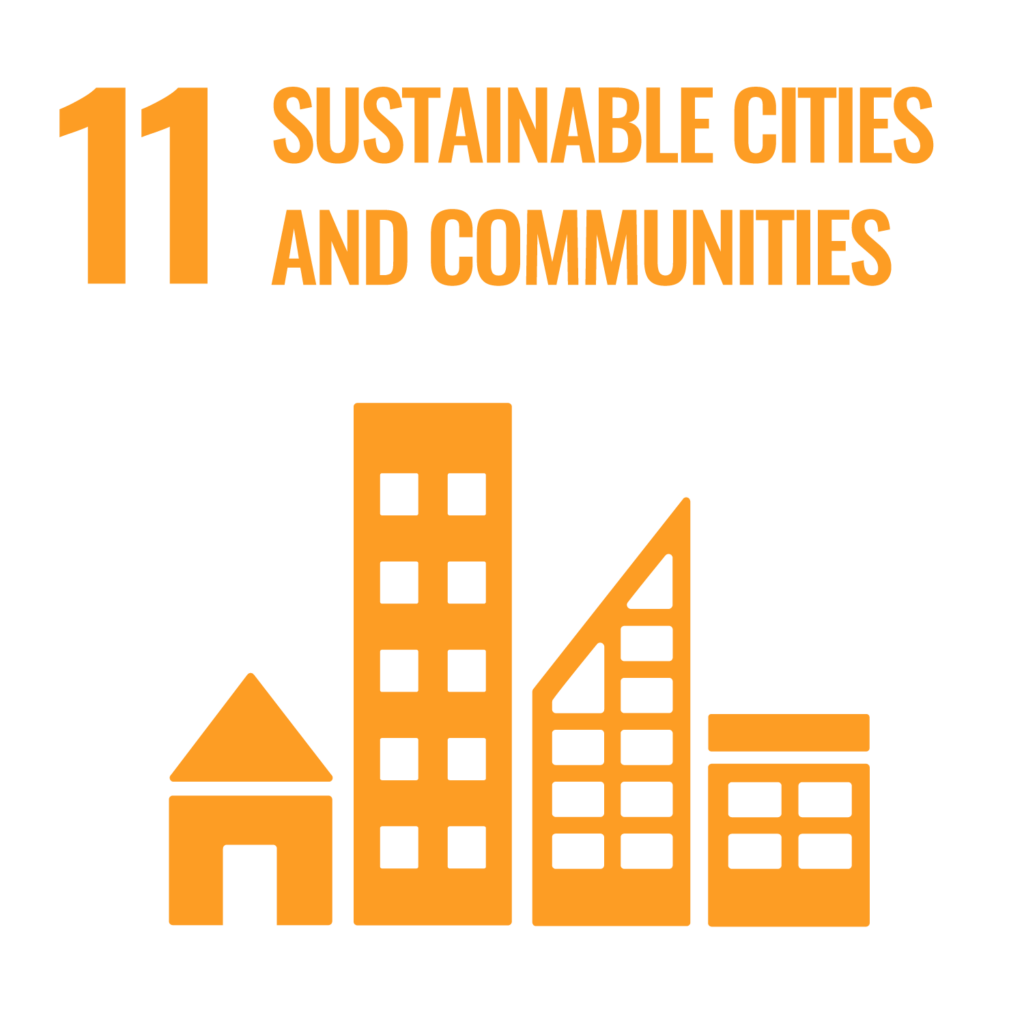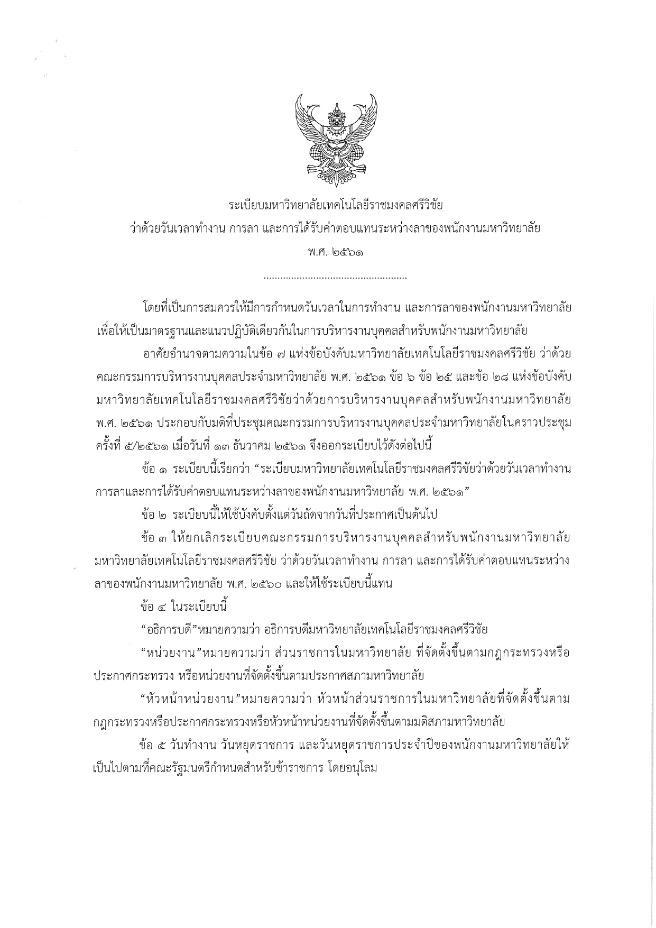Policy and Operation
Title:
Reporters: Dr. Jaray Suwannachart, Asst.Prof.Dr. Tachaya Sangkakool, Asst.Prof.Surawat Moogem and Tussawan Thong-on
Evidence Date: during 2023 Jan-Dec
Related Indicators: 11.4.6
Details:
The university has designed walkways and covered pedestrian paths based on the principles of Universal Design, which prioritize accessibility for all users, including students, faculty, and external visitors. This initiative emphasizes environmental sustainability by reducing energy consumption, such as minimizing vehicle use and promoting walking. The arrangement of pathways and pedestrian routes is also environmentally friendly, ensuring ease of access for all individuals.
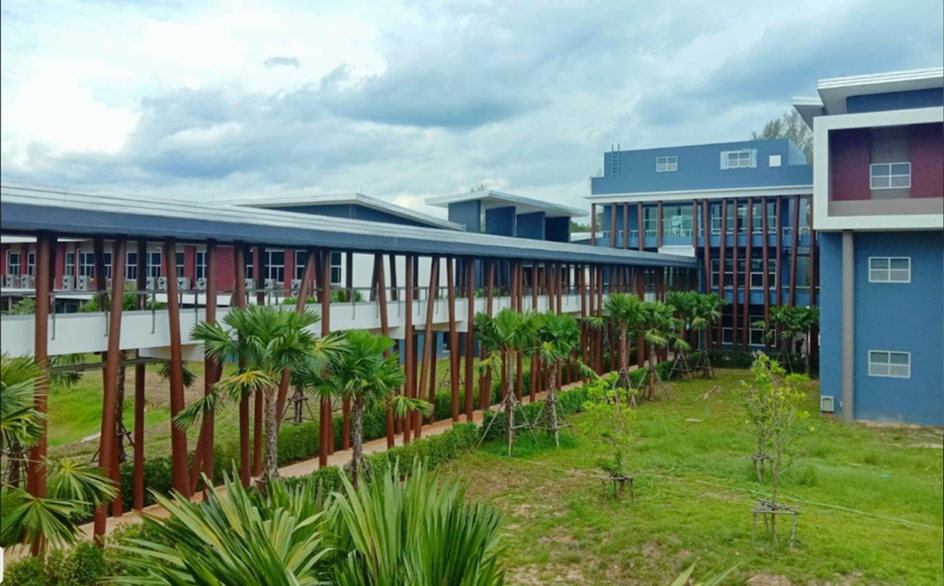
Picture 1 shows the covered walkway leading to the College of Hospitality and Tourism at the Trang campus.
Source: https://cht.rmutsv.ac.th/ruts/
The design concept for the university in Trang incorporates elements that resonate with the natural context and integrates rooftop gardens. This approach emphasizes harmony with the surrounding environment, ensuring that the architecture reflects and complements the natural landscape. The inclusion of rooftop gardens not only enhances the aesthetic appeal of the buildings but also contributes to biodiversity, supports urban agriculture, and promotes sustainable practices.
This thoughtful integration of nature and architecture aligns with Sustainable Development, particularly Goal 11, which focuses on making cities inclusive, safe, resilient, and sustainable. The design of the Trang campus at Rajamangala University of Technology Srivijaya emphasizes accessibility and connectivity, with pathways that facilitate walking and link various areas of the campus seamlessly.
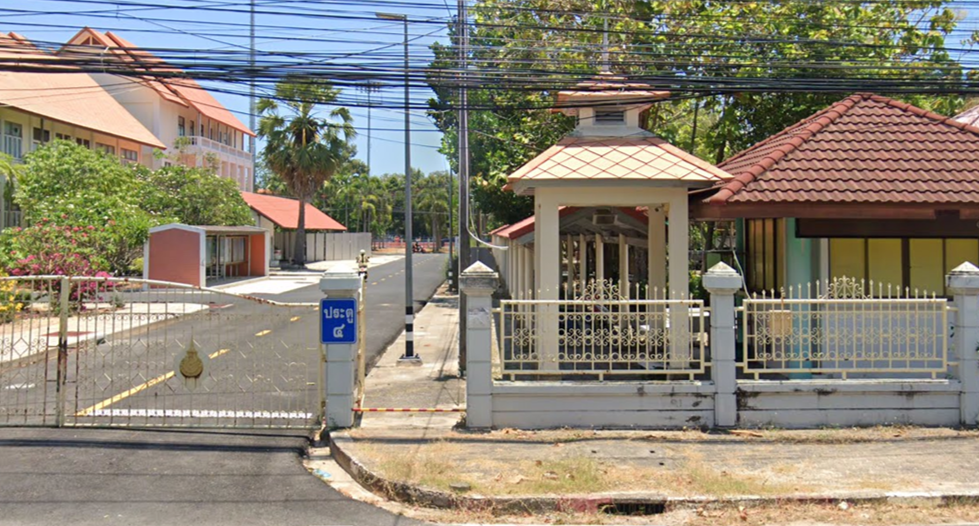
At the Songkhla campus, the covered walkways have been systematically constructed to connect the university entrance to various buildings, creating pedestrian-friendly spaces that reduce reliance on vehicles within the campus. This design significantly contributes to lowering pollution levels and mitigating environmental impacts. Additionally, the covered walkways serve as venues for sports training and competitions, providing athletes with shaded areas for rest during breaks or training sessions. The overhead coverage protects them from heat and rain, helping to reduce physical stress during workouts and enhancing recovery.
Picture 2 shows the covered walkway connecting to the main entrance at the Songkhla campus.
Source: google earth
Picture 2 shows the covered walkway connecting to the main entrance at the Songkhla campus. This design incorporates elements of Southern Thai architecture, featuring a distinctive terracotta tiled roof that adds to the aesthetic appeal while reflecting the region’s cultural heritage. The covered walkway provides a sheltered passage for students and staff, promoting accessibility and encouraging walking as a primary means of transportation within the campus.
This initiative aligns with Sustainable Development Goal (SDG) 11, which promotes sustainable cities and communities. By facilitating accessible infrastructure and encouraging walking over vehicle use, the university contributes to creating a more sustainable urban environment. Furthermore, the design fosters a healthier lifestyle by supporting physical activity, thus contributing to the overall well-being of the campus community. The integration of local architectural styles not only enhances the visual identity of the campus but also strengthens the connection between the university and its surrounding environment, fostering a sense of place and belonging among its users.
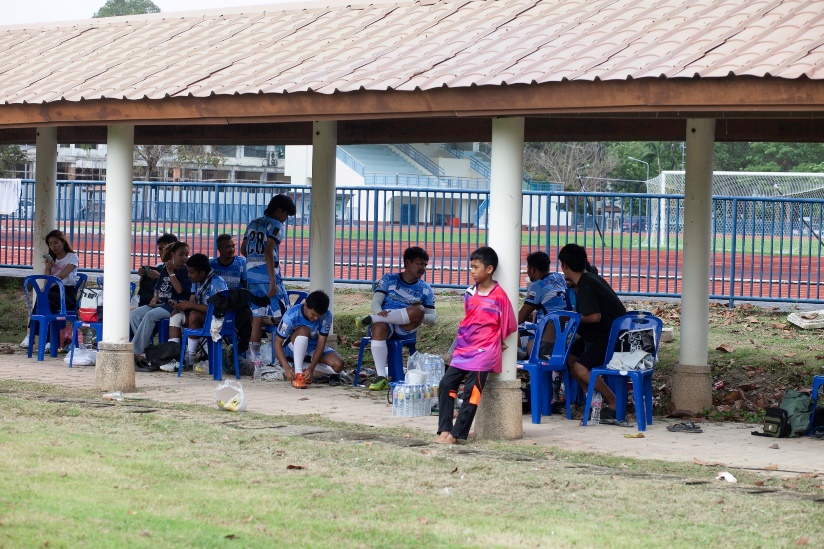
Picture 3 shows the use of the covered walkway for sporting activities. This sheltered space serves as a versatile area for athletes to engage in competitions and training sessions.
Source: https://www.facebook.com/photo/?fbid=122125351448103426&set=a.122125344356103426
Picture 3 shows the use of the covered walkway for sporting activities at the Songkhla campus. This versatile space is not only designed for transit but also serves as a vital area for health and recreational purposes. The covered walkway provides athletes and students with a sheltered environment for training and competitions, allowing them to engage in physical activities without the hindrance of harsh weather conditions.
This design enhances the overall well-being of athletes, students, and university staff by promoting physical fitness and encouraging outdoor activity. The shaded area reduces exposure to direct sunlight and rain, creating a comfortable setting for relaxation during breaks and between training sessions. Additionally, the walkway fosters community engagement by providing a shared space where both internal members of the university and external visitors can come together to support sports events and enjoy recreational activities. Thus, the covered walkway plays a crucial role in promoting a healthy and active lifestyle within the university community.
Related Links: https://plan.rmutsv.ac.th/ruts/wp-content/uploads/2024/10/RUTS-long-term-plan-2018-2037.pdf

